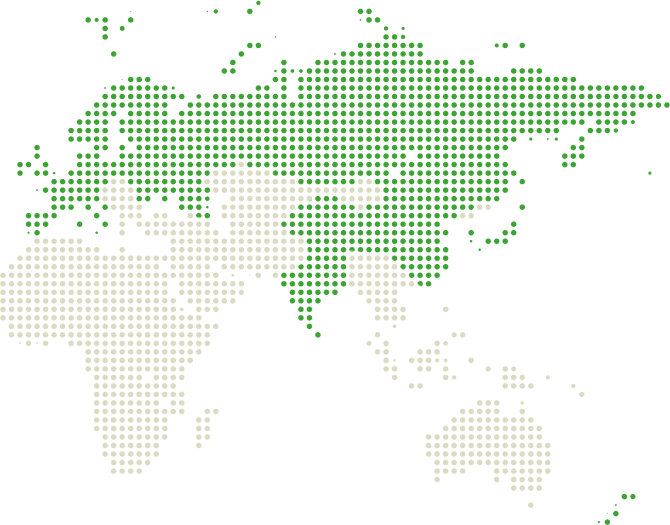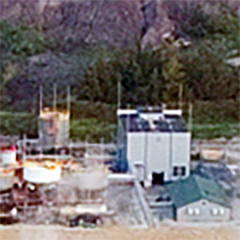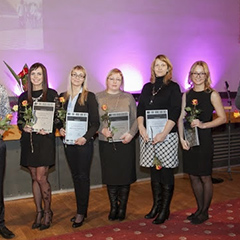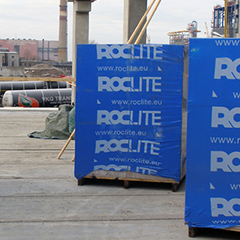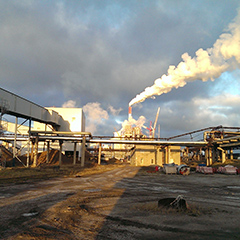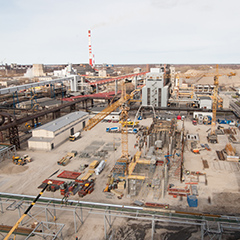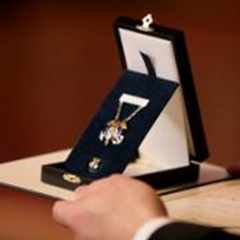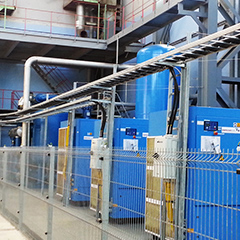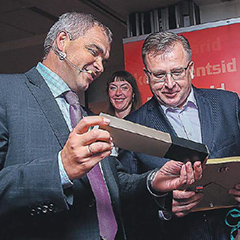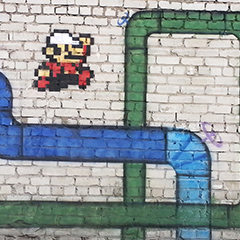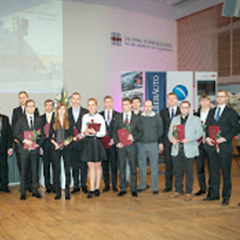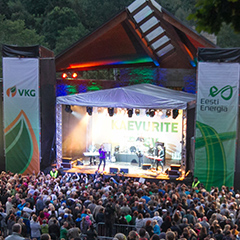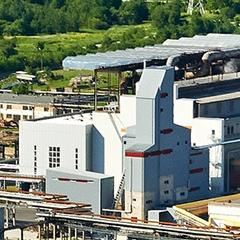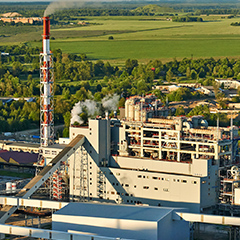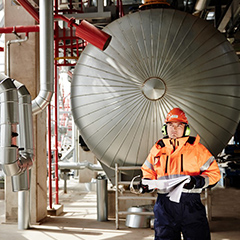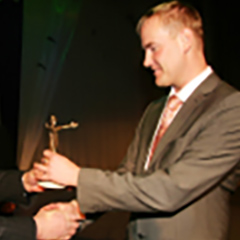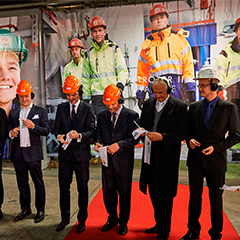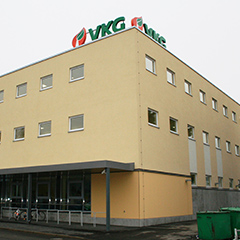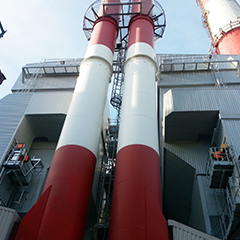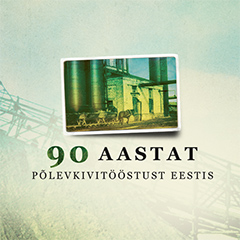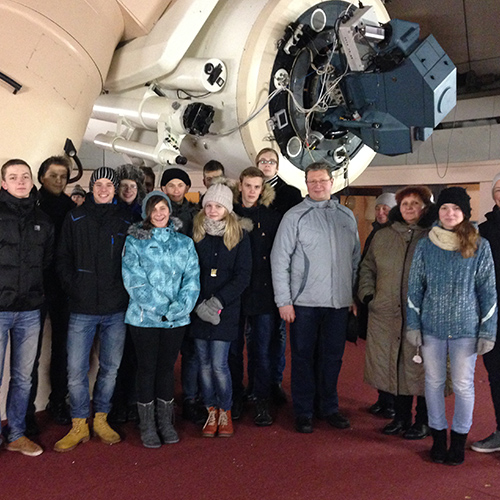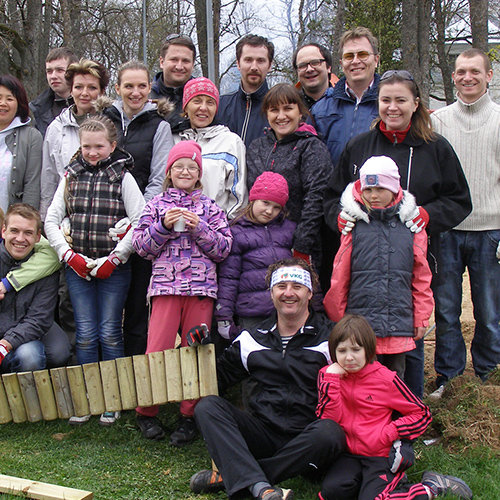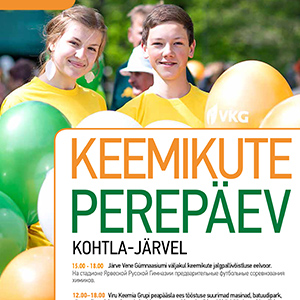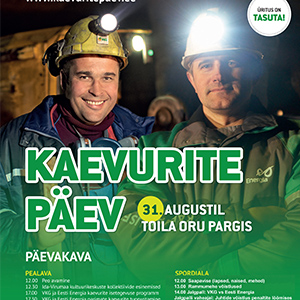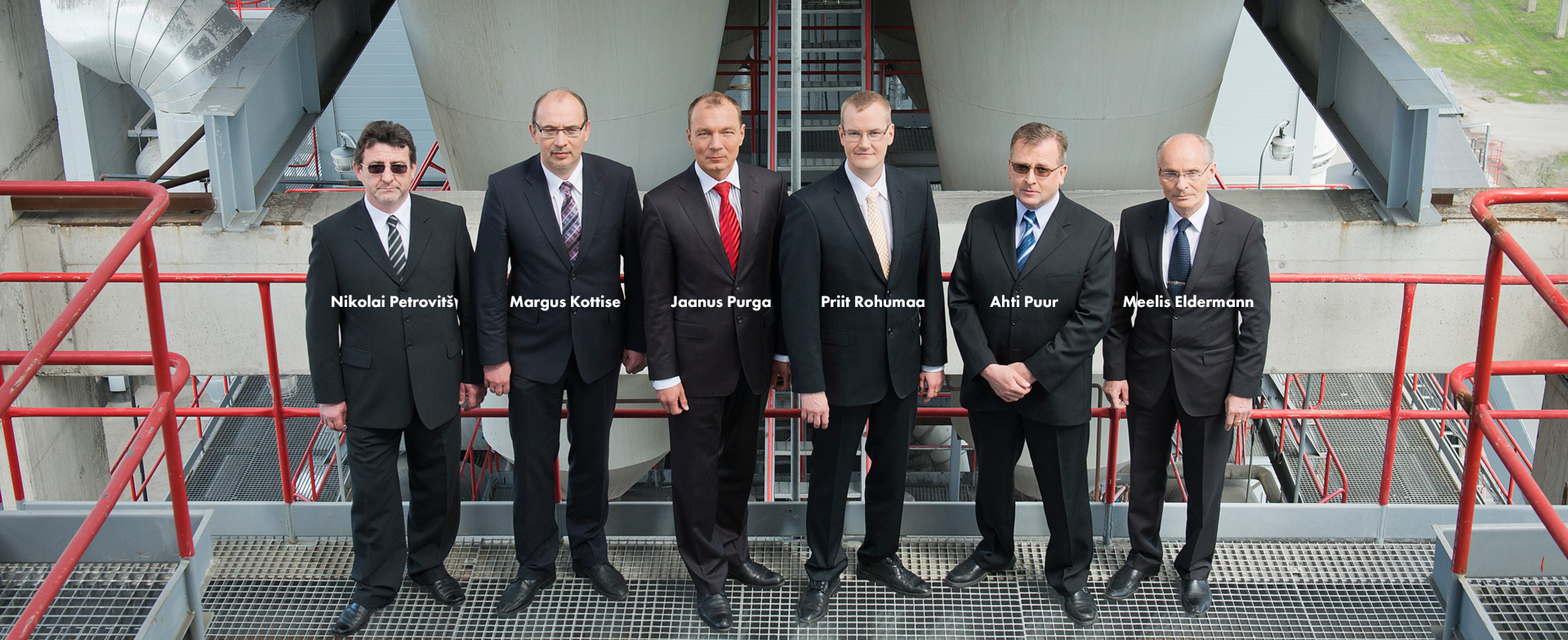Risk management system
The Management Board of the Group has the duty of shaping the risk management policy and affecting the risk management of Viru Keemia Grupp AS.
The goals of risk management of VKG are as follows:
- to support the making of management decisions;
- to avoid or diminish any damages to the Group’s assets and reputation;
- to increase the effectiveness of the Group’s activities;
- to increase the efficiency of using the Group’s resources (capital, energy);
- to reduce occurrences of unexpected situations and to prepare action plans and risk scenarios for such situations.
The base document for risk management is the one on which the risk management system is based. The document provides descriptions of significant risks of the Group, assessments of those risks, and opportunities to hedge them. The risks are determined on the basis of the Group’s most important targets, related to VKG’s striving to value oil shale as much as possible and to process it as efficiently as possible.
The results of risk assessment highlight the risks which should be considered more and which require a further plan of actions for hedging them. Risk management takes place on the basis of the precise vertical structure. The risk assessment document has been approved by the Management Board of VKG, and a responsible person from among the Management Board Members has been assigned to every significant risk, whereas such responsible persons must ensure that the Group actually hedges the relevant risk. The person responsible for managing the risk prepares an action plan for hedging the risk and presents the action plan to the responsible Management Board Member. On the basis of the results of risk minimisation, a new report is prepared annually about the assessment of risks, and new goals are set for the following year.
Business risks
Taxation
Business risks are the main strategic risks of VKG. Regular attention must be paid to the risk of delivery continuity of raw material, the risk of competitiveness of oil shale processing and the risk of managing capital-intensive investments.
The delivery continuity of raw material is one of the main business risks in the production chain of shale oils. In order to secure the availability of oil shale resource and to hedge the relevant risk, VKG opened the Ojamaa oil shale mine in the year 2012; it was the largest investment of the Group for the period of 2008-2012.
Oil shale processing may become uncompetitive primarily due to increasing taxation load, increasing labour force expenses, and an increase in the prime cost of the final product, which is connected with new large-scale investments into environment. VKG is carefully following the prescribed environmental requirements and participates actively in activities of professional associations, in order to be knowledgeable about future regulations. The Environmental Department of the Group is centralised and the internal monitoring processes have been developed for it. New investments into up-to-date technologies are continually made in case the environmental regulations become stricter.
The activity of VKG depends on timely making and financial success of large investments. In order to hedge risks, attention must be paid to management of investments – planning, project management and follow-up assessment. A comprehensive process is used for budgeting investments: investment budgets are prepared across subsidiaries and a separate project team is assigned for more important investments, involving relevant specialists from all levels of responsibility within the Group. Securing the financing of investments is also considered an important part of managing investments. A syndicate loan agreement signed in the year 2010 was used for refinancing the Group’s loan portfolio and for ensuring financing for ongoing large investments like the Petroter I oil plant, construction of a turbine unit for VKG Energia, and establishing of the Ojamaa mine. For new capital-intensive investments, new targeted loans will be undertaken on the basis of the syndicate loan. The Group’s syndicate loan agreement is financed by AS SEB Pank, Nordea Bank Finland Plc Estonian Branch and Pohjola Bank Plc. New development projects will be financed featuring EBRD, with which the Group entered into an agreement at the beginning of 2014.
Market risks
The most influential of the Group’s strategic market risks are changes of the crude oil and CO2 prices and the exchange rate of US dollar; these would cause the Group to have insufficient cash flows. Also, more and more attention must be paid to market prices of CO2, because dependency on those prices may continually increase in the future as environmental directives will cause less and less emission quotas to be allocated for carbon-intensive producers. Following the directives regulating sulphur content in maritime fuels, its content should be reduced significantly, in connection with which VKG is carrying out relevant research and tests, so that the main products manufactured at the enterprise would be up to the level.
The risk of changes of global prices is an inevitable part of the Group’s activities. Most of the shale oil sales contracts of VKG Oil are directly dependent on stock market prices of crude oil and crude oil products. The rest of sales prices of shale oils (domestic sales) are also indirectly dependant on global prices. The prices in the global market also affect the Group’s production costs, primarily via the price of natural gas used in the production process and the price of raw oils purchased from other producers. The purpose of monitoring that risk for the enterprise is to conduct ongoing analysis of the sensitivity of budgeted profit to changes of global prices for crude oil and crude oil products. The decrease in the price of fuel oil residual by 10 dollars per tonne is going to reduce the profit by about 3,2 mln EUR (based on the exchange rate 0.86 EUR/USD), and the higher the exchange rate of US dollar is, the higher is the impact of the fuel residual oil price change, and vice versa, the lower is the exchange rate, the lower is the impact of the price change.
In order to hedge the risk of a sharp drop of crude oil prices, the Group is acquiring oil price fixation options and gathering a liquidity reserve. The risk is indirectly hedged through activities of the Group’s Financial Division which regularly monitors market overviews and analyses the Group’s readiness to a market decline.
In the year 2014, two thirds of the Group’s turnover came from sales to the European Union and to third countries. The most important sales currencies are euro and US dollar. The Group’s expenditure is mainly in euros. Contracts are primarily signed with the currency of the country of location, and open currency positions are being avoided in organising everyday activities. The most important foreign contracts are signed in euros and in US dollars. The Group has not signed any contracts for derivative instruments for the purpose of hedging the currency risk. The dollar risk is indirectly hedged with oil price fixing options signed in euros. The Group is conducting an ongoing monitoring of currency risk, in order to analyse the sensitivity of the budgeted profit to changes of the exchange rate of US dollar. Decrease in the exchange rate of US dollar by one euro cent (0.01 EUR) is going to reduce the profit by about 0,8 mln EUR. No financial instruments have been acquired for hedging the market risk of CO2. The Group has been allocated emission quotas within the current allocation plan for 2013-2020. Continual monitoring will be conducted until the adoption of the allocation plan for the next period, similar to monitoring other environmental regulations; long-term plans consider possible risk scenarios and develop competence regarding emissions trading.
Environmental risks
VKG has an environment-intensive production cycle. Environmental impacts are associated not only with mining the resource but there is environmental risk present in both producing and marketing of shale oils. Environmental risks are assessed very highly and constant attention is being paid to those risks in many aspects.
Centralisation of the Environmental Department and mapping of risks at the Group’s level ensure an integral availability of environmental knowledge and competence. Environmental risks are mapped in the production cycles of each enterprise, quality standards for environmental management are adopted, and environmental risks are taken into account when establishing new investments, utilising independent experts for assessing the environmental impacts. Environmental risks are hedged via the fulfilment of all legal requirements and via the exercising of supervision. There is cooperation with the Rescue Board, and conformity to the requirements prescribed by the regulations is being audited.
Risks of destruction of assets
Destruction of assets can be caused by risks of production technology and, in turn, it can cause liquidity risk. The main cash flows of the Group depend on the oil industry, thus timely diagnostics and equipment mainteinance need to be performed on a regular basis, according to the schedule. Mapping significant elements of the production process allows timely reactions to the occurrences of technological risks. In order to systematise this activity and to hedge the risk, an asset management programme has been implemented.
VKG has signed a complex property insurance agreement for business interruptions, in order to protect itself against destruction of assets. The complex property insurance agreement includes all subsidiaries (except VKG Elektrivõrgud which has signed separate property insurance agreements) and the insurance provider is Seesam Insurance AS, If P&C Insurance AS and AIG Europe Ltd. The insured object is the immovable and movable property which belongs to the insured entity, is administrated or controlled by the insured entity, or for which the insured entity bears legal liability. Separate construction insurance agreements are signed for major investments. All of the operations, from construction to the registration of fixed assets at the Petroter II and Petroter III plants have been insured by Zurich Insurance plc.
Credit risks
Credit risk is an inevitable part of entrepreneurship. Upon managing credit risks, careful attention is paid to the payment discipline of the partners, their financial state is analysed and, if necessary, then third parties are involved as the guarantors in transactions. In case of pre-payments to suppliers, the beneficiary of the payment is requested to present a bank guarantee. We grant business credits only to our long-term cooperation partners. In case of one-off transactions and new clients we always request either pre-payment or a letter of credit. The Group deals with the unpaid /delayed bills from the clients on a daily basis. When a payment deadline of an invoice issued to a buyer is exceeded, the buyer is reminded by notices and warnings. The Conditions have been determined for initiating a court action if there is a need to collect the debt. Signing of the special agreements is in the Management Board’s competence. Liquid funds of the Group are held as short-term deposits in banks with the highest credit ratings. Deposits with moderate risk level are used for hedging liquidity risk in addition to credit risk: the Group has a target of ensuring availability of at least 12 months’ funds for loan repayments and interest payments.
Interest risks
As of 31.12.2014, the Group has interest-bearing liabilities in the amount of 225 million euros, amounting to 37% of the balance sheet volume. Due to a large share of interest-bearing liabilities, the management considers the risk of money market interest rates increase to be a significant risk to the Group’s activity. Regarding the loan obligations, there is a risk of the decrease of cash flows. In the period of 2015-2020 the Group is planning to make extremely capital-intensive investments, and these will increase the interest risk. The loan interests of the Group are based on the interest rate of (2.2–3%) plus 1 or 3 month’s Euribor. In relation to the possible fluctuations of Euribor, the Group is analysing the sensitivity of its cash flows and profit to an increase of the interest rate by 1%. The analysis performed indicates that an increase of interest rates by 1% would influence the cash flows generated by the Group in the year 2014 and would affect the profit before income tax in the extent of ca. 1.8 million euros.
Internal auditing department
An important part of risk management is ensuring and monitoring the functioning of internal auditing systems. VKG has established the Internal Auditing Department for that function; the Department is a structural unit that operates independently from VKG and monitors the activities of the Group, its subsidiaries and their subsidiaries, and other business associations belonging to the consolidated group of VKG, in order to make sure that those activities conform to the laws of the Republic of Estonia and to other legal acts, the Articles of Association of VKG, decisions of general meetings of shareholders, decisions of the Supervisory Board and the Management Board, and internal regulations and action guidelines of the Group and its subsidiaries.
The central task of the Group’s Internal Auditing Department is to study and assess the economic activities of the Group on the basis of trustworthiness and efficiency of internal auditing.
The task of internal auditing is to identify possible shortcomings in the activities of the employees of the Group and its subsidiaries, their possible work errors and cases of abandoning of duties and exceeding of authorisations, to draw attention to those, and to make suggestions for avoiding those in the future.
The internal auditor prepares an act or a report of internal auditing and presents it to the audited entity for reviewing and feedback. The Internal Auditing Department prepares reports on the discovered shortcomings together with assessments, conclusions and suggestions, consolidates data about the activities of the Group and its subsidiaries, and prepares overviews and analyses thereof for presenting to the Executive Managers and Management Board Members of the Group and/or its subsidiaries depending on their importance and level of generalisation.
International management systems
International management systems like ISO and OHSAS have separate procedures for risk hedging in quality management, environmental management and occupational safety management. Those internationally recognised systems are in effect in VKG as well. The table below lists the management systems in use in the Group’s subsidiaries.
| Name of subsidiary |
ISO certificates
(environmental and quality management systems) |
OHSAS certificate
(occupational health and safety management system) |
| VKG |
ISO9001, ISO14001 |
|
| VKG Oil |
ISO9001, ISO14001 |
OHSAS18001 |
| VKG Energia |
ISO9001, ISO14001 |
OHSAS18001 |
| VKG Transport |
ISO9001, ISO14001 |
OHSAS18001 |
| Viru RMT |
ISO9001 |
OHSAS18001 |
| VKG Soojus |
ISO9001, ISO14001 |
OHSAS18001 |
| VKG Plokk |
ISO9001 |
|
| VKG Elektrivõrgud |
ISO9001 |
OHSAS18001 |
| VKG Elektriehitus |
ISO9001, ISO14001 |
OHSAS18001 |
Safety of chemicals and product liability
VKG takes active part in the chemical industry undertakings on local, national, and international levels. The Group is the member of the Federation of Estonian Chemical Industries (FECI), through which it is closely connected to the application of voluntary initiatives CEFIC1 and ICCA2 launched by the European and global chemical industry umbrella organisations. VKG has been committed to the Responsible Care (RC) initiative for over 10 years already, and in 2013, a decision was made to join the project of implementation of the Global Product Strategy3 (GPS) among the first in Estonia.
GPS is a voluntary initiative managed by ICCA, which, together with the RC Global Charter, is the foundation for the contribution made by the chemical industry into the Strategic Approach to International Chemicals Management (SAICM4), implemented by the United Nations. For the chemical industry all over Europe, GPS will allow to boost the results and to expand the range of use of REACH as well as to raise the level of trust displayed by the public in terms of safe handling of chemical substances. While the REACH subject files are very thick, specific, complex, and detailed, the GPS files are summaries of the safety information (GPS Product Safety Summary), which contain risk analysis and the information concerning risk management in a clear format that can be forwarded to employees, subusers, and other interested parties. Those summaries contain the information about dangers and exposure, recommendations for risk management, and the description of benefits this or that chemical substance can bring to society.
In Estonia, the application of GPS is coordinated by FECI, but it is implemented by companies themselves, and in our particular case, VKG has become an active proponent of this initiative at the level of the Estonian chemical industry. In 2013, the main efforts were spent on getting ready for the project: mapping essential activities, clarifying the needs, planning resources, etc. The first tangible results will be achieved this year, i.e. in 2015, when the first summaries of the safety information will be uploaded to the GPS portal, and the completion of the project is connected with the last REACH registration deadline in 2018, by which the safety information summaries about all of the substances present on the market must be made available for the public.
1 The European Chemical Industry Council - www.cefic.org
2 International Council of Chemical Associations - www.icca-chem.org
3 www.keemia.ee/et/keemiatoeoestus-hoolib-ja-vastutab/uelemaailmne-tootestrateegia-gps
4 Strategic Approach to International Chemicals Management (SAICM) is a policy framework to foster the sound management of chemicals - www.saicm.org
The main goals of GPS:
- Wide distribution of knowledge about hazardous substances.
- Promotion of product liability and provision of adequate handling and use of chemical substances within the entire value chain, regardless of the geographical position (the minimization of differences between developing and industrial countries), offering relevant and reliable information.
- Increase in transparency; helping the companies to offer to the interested groups the information about chemical substances on sale easily and in a clear format: GPS safety information in the form of a summary.
- In 2018, the product safety information about all the substances on the market will be available for the public.
Recording and reporting hazardous chemical substances
The important principles of the Responsible Care initiative is the provision of assistance to other companies and taking responsibility for the company´s own products within the entire value chain. In addition to ordinary customers, those principles should also be applied within the Group, which is why the principles of recording and reporting hazardous chemical substances are being harmonized and improved at VKG as a whole at all levels. The priority of the Group in this field is cooperation and synergy between subsidiaries as well as learning from each other. The preliminary works that prepare the company for harmonization of the principles of recording and reporting had started earlier, but in 2013, the first tangible and comparable results were achieved. The aim of subsequent years shall be the advancement of the system and the ongoing increase in the quality of information to be collected through the distribution of the best practices among subsidiaries.








